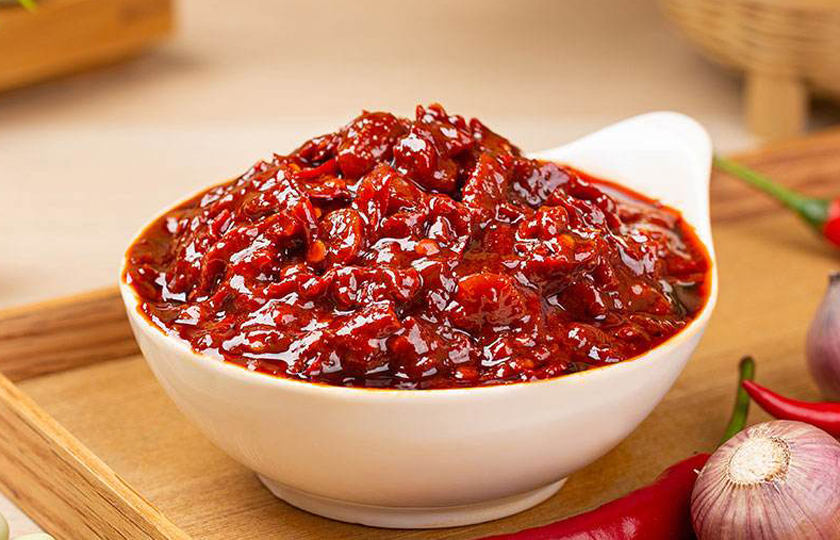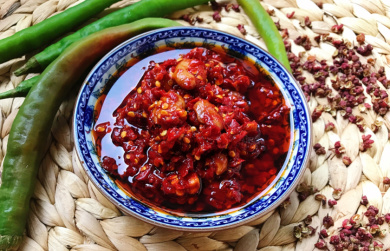How Long Does Doubanjiang Last in the Fridge? Storage Tips

Doubanjiang is one of my favorite seasonings. Whether making hot pot dipping sauce or Sichuan cuisine, we can't do without it. So many people may ask, does doubanjiang need to be stored in the fridge? And how long can it be stored?
Storage time of doubanjiang in the fridge
Refrigerated after opening: 6 months to 1 year
Doubanjiang belongs to high-salt fermented food and has certain preservative properties itself. However, if it is exposed to the air for a long time after opening, it may still get damp or develop mold. Storing it in the refrigerator (0 - 4°C) can effectively delay deterioration, and the storage time is usually 6 months to 1 year.
Refrigerated when unopened: Up to 2 years
Unopened doubanjiang can have a longer storage time in a refrigerated environment due to its intact seal. Generally, its flavor can be maintained for 1 - 2 years.
Storage time of doubanjiang at room temperature
Room temperature when unopened: About 6 months
Doubanjiang made by traditional techniques has a high salt content (about 15% - 20%). When unopened, it can be stored in a cool and dark place for about 6 months. However, high temperatures or humid environments in summer will accelerate its deterioration, so refrigeration is recommended as much as possible.
Room temperature after opening: 1 - 2 months
If left at room temperature for a long time after opening, the surface of doubanjiang may turn black due to oxidation, or too much oil may separate out.

How long is the shelf life of doubanjiang?
The shelf life marked on the packaging of commercially available doubanjiang is usually 12 - 24 months. However, the actual storage time is affected by the following factors:
Salt content: The higher the salt content, the better the preservative effect.
Oil-sealing process: Some brands add oil to isolate the air and extend the shelf life.
Additives: Doubanjiang containing preservatives has a longer storage time, but the naturally fermented doubanjiang has a better flavor.
To determine if it has deteriorated: If it has an acidic or foul smell, mold spots, or a thick and lumpy texture, discard it immediately!
Precautions for storing doubanjiang
Pay attention to sealing: Whether storing it in the fridge or at room temperature, ensuring that the container of doubanjiang is well-sealed is the key. After use, tighten the bottle cap immediately, or cover the bottle mouth with plastic wrap and then screw on the cap to reduce air contact.
Keep tools dry: Use a clean and dry spoon to scoop out doubanjiang to avoid bringing water or impurities into the bottle.
Don't worry about stratification: Oil and sauce may separate after being stored for a long time. Just stir it and it can be used normally.
Freezing is not recommended: Low temperatures will damage the fermented flavor of doubanjiang and make the texture turn powdery.
Observe changes: Regularly check the condition of doubanjiang. Once you find mold spots, strange smells, or a thinner texture, stop using it immediately.
What ingredient is doubanjiang?
Doubanjiang is a traditional Chinese fermented seasoning. It is mainly made from broad beans (or soybeans), chili peppers, and salt through microbial fermentation. Depending on the origin and manufacturing process, wheat flour, glutinous rice, spices, etc. may also be added.
Pixian Doubanjiang (from Sichuan): Made from broad beans and Erjingtiao chili peppers, with a bright red color and a fermentation period of over 3 years.
Homemade Doubanjiang: The ratio of broad beans to chili peppers is more flexible, with a short fermentation period and a direct salty and spicy flavor.
Its unique umami comes from the amino acids and esters produced during the fermentation process, making it a kind of "natural monosodium glutamate".
Is doubanjiang fermented?
Yes! Doubanjiang is the product of deep fermentation.
The traditional production process includes:
Peel and steam the broad beans, and mix them with Aspergillus oryzae to make the starter;
Add chili peppers and salt to the tank and ferment in the sun;
Stir regularly for several months or even years.
During the fermentation process, microorganisms break down proteins into umami substances and produce complex aromas at the same time. This is also the reason why aged doubanjiang is more mellow than new ones.
Can I use gochujang instead of doubanjiang?
Although both gochujang and doubanjiang contain chili peppers, they have significant differences in flavor, texture, and uses, and cannot be completely substituted.
Doubanjiang is known for its spicy, numbing, fresh, and savory taste with a strong sauce aroma, while gochujang is more inclined to a sweet and spicy flavor and has a thicker texture. When cooking, if you want to achieve an authentic Sichuan cuisine flavor, doubanjiang is irreplaceable.
How to cook with doubanjiang?
Stir-frying: Heat the pan and add cold oil. First, sauté scallions, ginger, and garlic until fragrant. Then add an appropriate amount of doubanjiang and slowly stir-fry over low heat until the red oil separates out. At this time, add the main ingredients and quickly stir-fry to fully integrate the aroma of doubanjiang into the ingredients.
Stewing meat: When stewing meat, you can mix doubanjiang with seasonings in advance and smear it on the surface of the meat for marination, or add it during the stewing process to enhance the flavor.
Making soup: When making soup, such as Spicy Tofu Soup or Pickled Fish Soup, you can add a small spoonful of doubanjiang when the soup base is almost cooked. Stir well quickly to add a touch of color and flavor to the soup.























